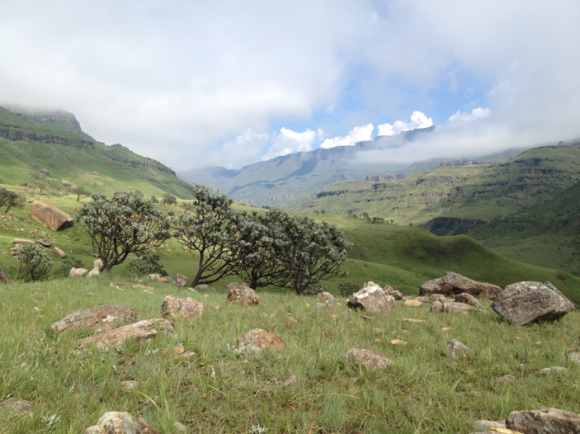A recent study by C·I·B Associate, Sjirk Geerts (based at Cape Peninsula University of Technology), together with researchers from the C·I·B, SANBI’s Invasive Species Programme and the University of Cape Town, stressed the importance of human activities in the spread of some of the most notorious plant invaders.
The study, published in the scientific journal Biological Invasions, was the first detailed study of Kudzu vine (Pueraria montana var. lobata) in South Africa.

Geerts and his colleagues conducted a national wide survey and found seven populations of Kudzu vine in South Africa, covering an area of 74 hectares. By using models that predict where Kudzu vine is likely to thrive, the researchers found that the climate is suitable for Kudzu vine across the eastern escarpment and parts of KwaZulu-Natal, while the models suggested that the rest of the country is climatically unsuitable.
In the United States of America (USA) Kudzu vine has taken over many areas and removing it costs the country millions of US dollars each year. Geerts and collogues found that South African populations of Kudzu vine have a similar ecology to populations in the USA, with high growth rates, low seed germination rates, no natural long-distance dispersal, little herbivory and the ability to resprout vigorously after a fire. Unlike the USA populations, however, most South African populations produce flowers, and the flowers can produce seed without the need for insect pollinators. So Kudzu vine should be at least as invasive in South Africa as it is in the USA?
The authors argue that the reason Kudzu vine is not (yet!) a major problem in South Africa is down to its introduction history. Kudzu vine was introduced to South Africa in the 1930s as fodder for horses. However, it was never widely planted, and the species was for many years only present at a single site.
By contrast, in the USA there was a concerted effort to plant Kudzu vine for fodder and erosion control, with, in some cases, governmental funding provided to encourage Kudzu vine plantings. In South Africa, many of the plants are found on roadsides where mowing is an important cause of spread.
The lesson is simple. If an invasive species is planted more often, the future invasions will likely be larger and any negative impacts much greater.
“The comparison between the invasions of Kudzu vine in the USA and South Africa highlights the often over-riding importance of human-assisted dispersal and cultivation in causing widespread invasions. This should serve as a warning to people who have proposed to use this species elsewhere in Africa,” says Dr Sjirk Geerts.
Read the article in Biological Invasions
For more information, contact Sjirk Geerts at geertss@cput.ac.za or SANBI’s Invasive Species Programme at invasivespecies@sanbi.org.za



